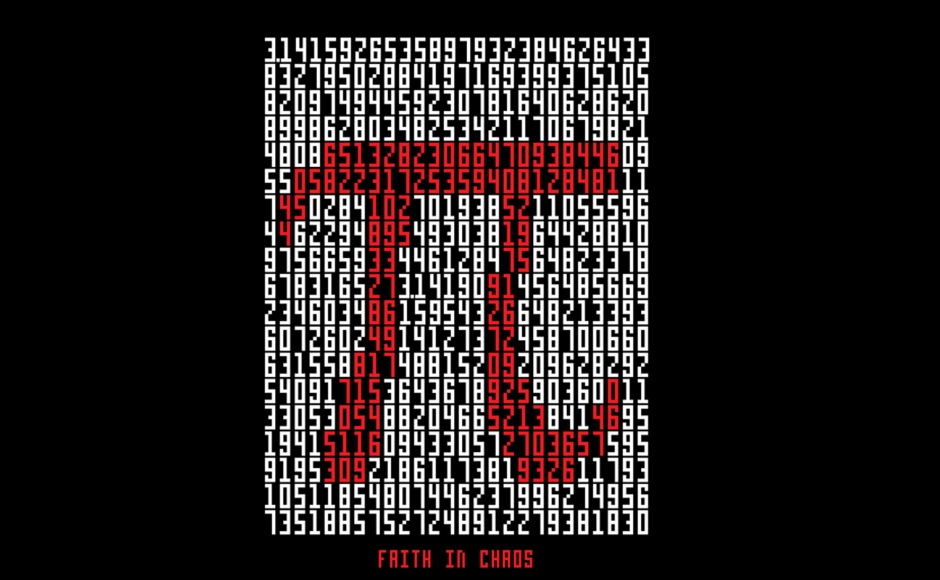The first film from director Darren Aronofsky will be presented 6 p.m. February 25 at the Collingswood Public Library with a discussion to follow. All films are free; refreshments provided.
By Robert Castle | February 25, 2020
The plot of Pi (1998), the first feature film from director Darren Aronofsky, is simple: a paranoid mathematician searches for a key number that will unlock the universal patterns found in nature.
Like many of Aronofsky’s films that followed—Requiem for a Dream (2000), The Fountain (2006), The Wrestler (2008), Black Swan (2010), Noah (2014), and Mother! (2017)—Pi features an intensely driven central character whose obsessive behavior approaches madness.
Black Swan is Aronofsky’s most successful film, garnering four Oscar nominations, including a Best Actress win for Natalie Portman, and more than $300 million at the box office. Noah earned nearly $360 million. The Wrestler brought in almost $45 million on a $6 million budget, and landed a Best Actor nomination for Mickey Rourke. Ellen Burstyn received a Best Supporting Actress nomination for Requiem for a Dream, a film currently rated #91 at IMDb.
Besides Pi, Aronofsky’s most audacious if not experimental films are The Fountain and Mother! He takes basic universal premises—the search for immortality and the house guests from Hell, respectively—and weaves intriguing dramas that can be hit or miss, even for Aronofsky fans.
Pi is shot in a high-contrast black-and-white. Its main character, Maximillian “Max” Cohen, played by Sean Gullette, is beset by increasingly intense headaches that coincide with his getting nearer to realizing the numerical series that links everything in the world. Worse, his work draws the notice of Wall Street thugs and a radical Jewish Kabbalah sect.
Despite the film’s growing claustrophobia, there’s a feeling in Pi that we are approaching an apocalyptic outcome. In some ways, it resembles our previous film, The Last Wave (1977), in which a man has haunting premonitions (stimulated by his association with an aboriginal shaman), one being a massive tidal wave subsuming Australia. Our March film, Invasion of the Body Snatchers (1956) depicts its version of a universal crisis for humans.
Extracurriculars
My Film course at Haddon Township Adult Night School began the semester, whose theme is ‘Unexpected Films’, with an Italian film from 1964, The Ape Woman (La Donna Scimma), directed by Marco Ferreri. The story: “a modest Neapolitan man meets a young woman with excessive hairiness. He exhibits her at fairs and marries her. It is after marriage that he receives a tempting offer from a French manager.” Ferreri is known for his bizarre scenarios, about which I have written here and here.
I chose the film because I needed a strange, compelling film to initiate a course that will depend on successive films contrasting with previous ones. Also, living up to the course title, I want each film to contain unexpected elements. For example, how can we take seriously this ape woman and her exploitation? One certainly doesn’t expect the story to take a tragic turn.
Our second film will be Sexy Beast (2001), directed by Jonathan Glazer, and starring Ray Winstone and Ben Kingsley, the latter giving one of his most unforgettable performances.
Bob Castle is a critic and playwright whose works have been performed off-off Broadway, at the Philadelphia Fringe Festival, at Philadelphia-area theaters, and at One Minute Play festivals. His books can be found through Amazon, including novels (Pope Sixtus the Fourth & Berthcut & Sons), short stories (Odd Pursuits, Fits of Generosity, & Near Death Experiences), essays (The Interpretive Odyssey of Stanley Kubrick, The Education Battleground, & Half-Baked Ideas), a novella (The Lies Commonly Agreed Upon), plays (American History in a Flash, A Few Minutes of Your Time, and Giving a Damn), and his first book, the unclassifiable A Sardine on Vacation. Castle has lived in Collingswood with his wife Donna for the last 30 years.




